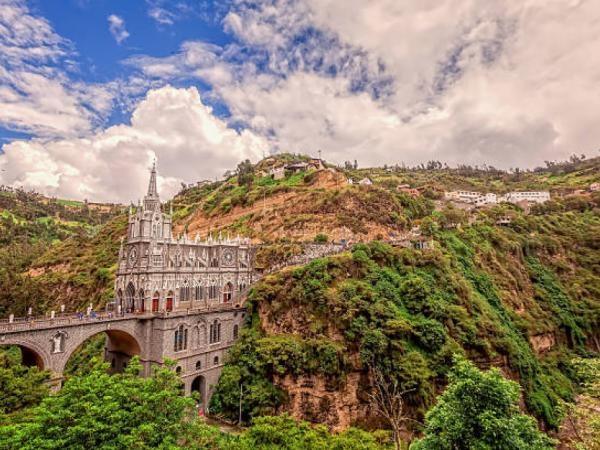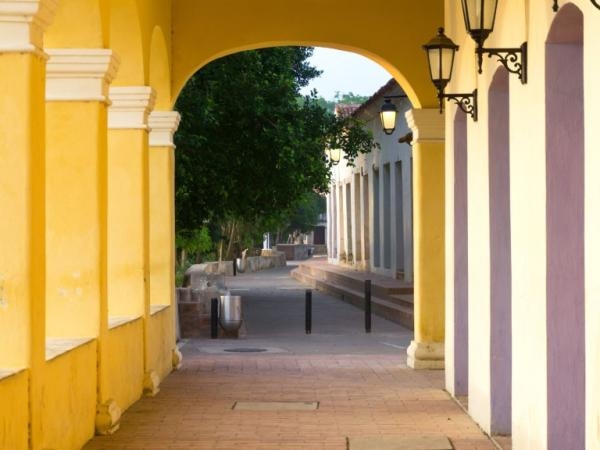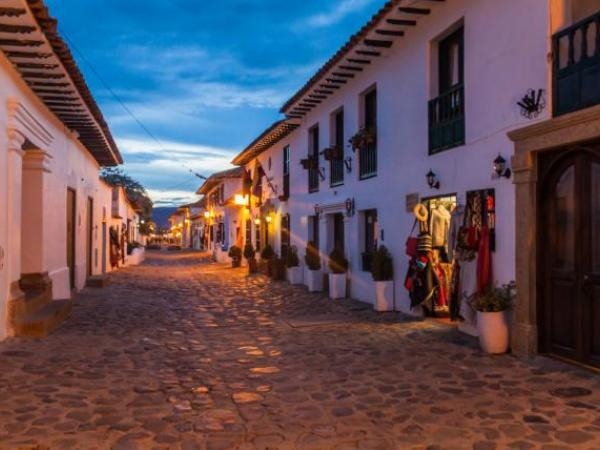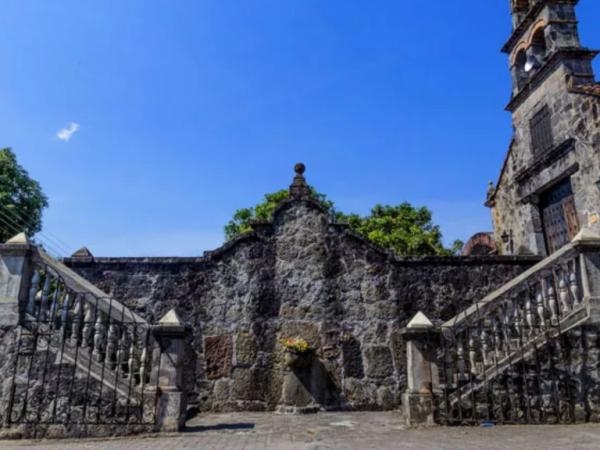Between canals, bridges, and bikes: why everyone falls in love with the magic of Amsterdam
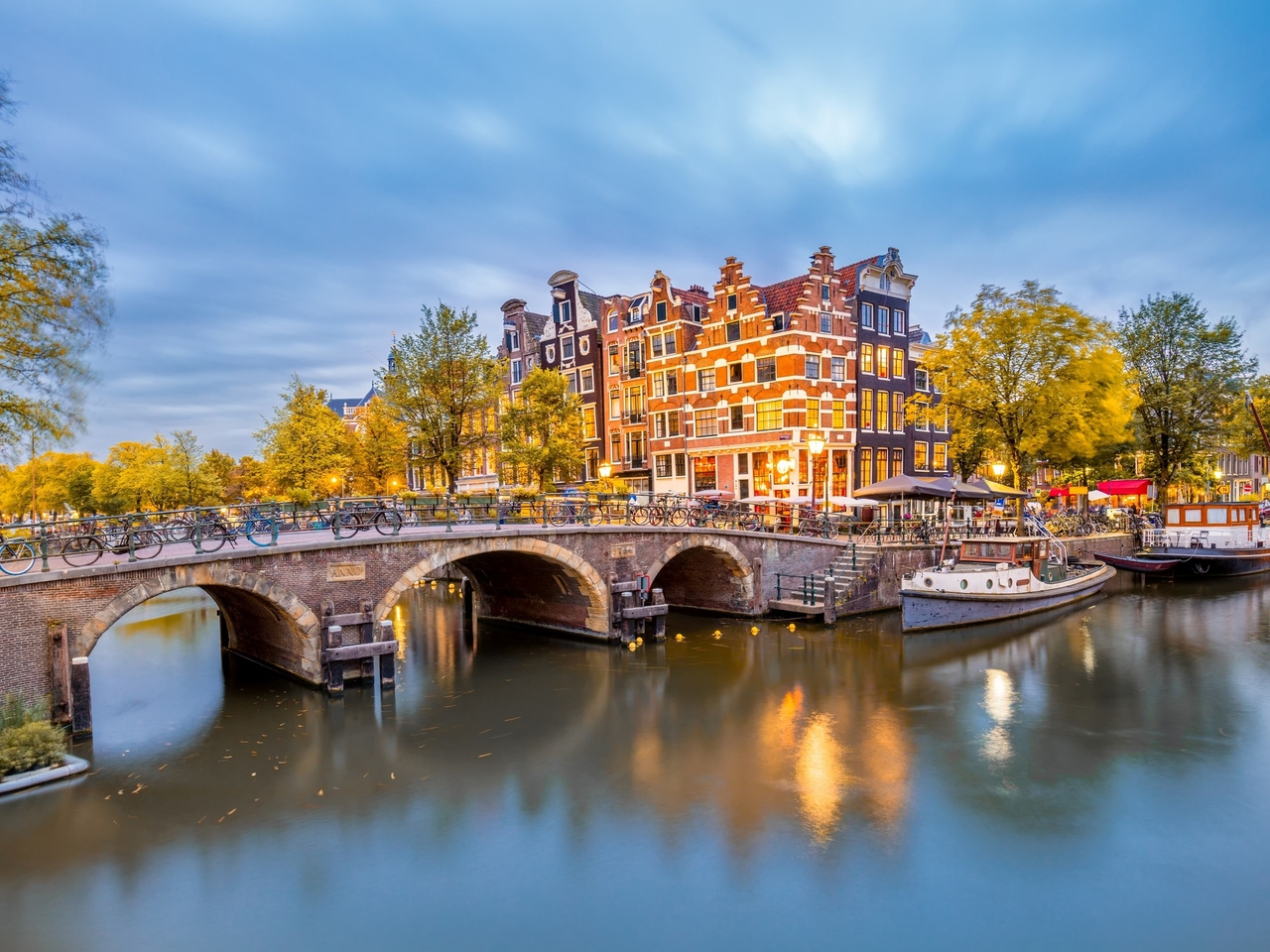
It is celebrated when the sun rises in the autumn of Amsterdam , the city of canals, tall houses and bicycles.
Because at all hours of the day, thousands of residents of the Dutch capital pedal at full speed along the wide, traffic-lighted cycle paths: they're going to work, to school, to the markets.
They even keep their dogs on a leash alongside them, or their children in covered strollers in front of the first wheel to protect them from the wind and the frequent drizzle.
There's no better way to explore the city than by bike , locking it up every time you have to stop because we're warned that it's the only thing that can be stolen in this safe, sustainable, and avant-garde destination .
But it's also a great place to walk its historic cobbled streets and take a river cruise , a great opportunity to pass under some of its 1,200 bridges and navigate some of its 165 canals .
The pride of the city, this system of more than 100 kilometers of circular canals was declared a UNESCO World Heritage Site as an example of 17th-century urban planning and architecture, a testament to the city's economic and cultural driving force.
 Postcard of the houseboats on the canals. Photo by Diana Pazos
Postcard of the houseboats on the canals. Photo by Diana PazosKnown as the “Venice of the North,” Amsterdam is home to some 2,500 houseboats, all with their curtains open (“we have nothing to hide,” say the Dutch).
On both sides of each canal, we notice the same thing when observing the characteristic tall, sloping and very narrow houses : several glass windows, no bars and the interior exposed, to which is added a hook at the top of the facades to lift furniture or large purchases.
“Amsterdam is unique; it has a very strong identity, and everything has been shaped around freedom and tolerance. It has always been a very modern city : it's responsible for many of the things we have today and for capitalism as we know it after the Reformation,” says Erik Sadao, a Brazilian who speaks Spanish and English and will be our guide through the city's main museums and on an unforgettable bike tour.
 There are more bicycles than people in Amsterdam. Photo by Diana Pazos
There are more bicycles than people in Amsterdam. Photo by Diana PazosAnd he adds: "For example, in 1602 the Dutch East India Company founded the Amsterdam Stock Exchange—the oldest in the world—to trade its bonds and stocks, and in 1609 the Bank of Amsterdam facilitated for the first time transactions that are common in modern banking. These were centuries of maritime expansion, wealth, and culture."
In keeping with its free spirit, "WorldPride Amsterdam 2026" will take place from July 25th to August 8th next year, marking the first time the city has hosted this global event, which aims to raise visibility and awareness of LGBTQIA+ issues internationally. The first equal marriage was celebrated here in 2001, marking the 25th anniversary of the event.
Other areas the city is focusing on include sustainability, waste separation, and transportation. We saw this in early October: the silence in Amsterdam's crowds is audible because most people use trams, bicycles, and electric microcars every day.
“ There are more bicycles than people : that's 2 million bikes and 1,300,000 inhabitants, including the city's surrounding areas,” Erik points out.
 Amsterdam has 1,200 bridges and 165 canals. Photo by Shutterstock
Amsterdam has 1,200 bridges and 165 canals. Photo by ShutterstockTo understand the logic of fate, we start at the heart of the historic center, more precisely Dam Square . It's a grid of small cobblestones whose origins date back to the 13th century, when the first Dam (dike, in Dutch) was built on the Amstel River.
There is the Royal Palace —with its green dome currently under restoration—used by the royal family for official ceremonies and state visits.
Facing it, the National Monument commemorates the Dutch fallen during World War II. And to one side, in the New Church (Nieuwe Kerk) , monarchs are inaugurated, as happened in 2013 for King Willem-Alexander and Argentine Máxima Zorreguieta.
 The narrow Magere Brug drawbridge, the city's most visited bridge. Photo by Shutterstock
The narrow Magere Brug drawbridge, the city's most visited bridge. Photo by ShutterstockDespite its name, the new church dates back to the 14th century, when the old church (Oude Kerk) was not large enough for everyone.
Strolling through the streets and alleys of Amsterdam allows you to discover the different neighborhoods, all full of charm, with shops, museums, and cafes intertwined with the daily lives of the residents. And of course, there are also the coffee shops where you can smoke, which always give off a sweet aroma as you walk through the doors.
Without going any further, the Jordaan is a former working-class neighborhood that has now become one of the most beautiful and vibrant.
Its cobblestone streets are home to cafes, shops, and galleries, and the bustling Noordermarkt market is a great place to soak up the local atmosphere. It's also home to the poignant Anne Frank House.
Many tourists admire and take photos at Prinsengracht 263 , the gateway to the Anne Frank House .
 The door to the Anne Frank House. Photo by Diana Pazos
The door to the Anne Frank House. Photo by Diana PazosAround the corner is the museum entrance, from where you can visit the annex where they hid for more than two years with their father, mother, and sister during the Nazi occupation.
A hinged bookcase hid the entrance from the family's business to the back of the house, while friends and acquaintances brought food and news from outside to the Franks, the Van Pels family, and Fritz Pfeffer.
 The revolving library that led to the annex where Anne Frank's family hid. Photo: Shutterstock
The revolving library that led to the annex where Anne Frank's family hid. Photo: ShutterstockBut on August 4, 1944, they were discovered and taken to concentration camps, from which only their father, Otto Frank, survived.
He published the young woman's diary, which was translated into 70 languages , and in 1960 the Anne Frank House became a museum.
The tour allows you to tour the rooms of the Annex, see the objects they used, and even read excerpts from Anne's original diary.
 The National Holocaust Memorial, with its bricks bearing the names of victims. Photo by Diana Pazos
The National Holocaust Memorial, with its bricks bearing the names of victims. Photo by Diana PazosTo commemorate the victims of the Nazi genocide, the Jewish Quarter features museums, synagogues, and cultural centers that tell their stories.
The National Holocaust Memorial, known as the "Monument of Names," is a permanent memorial to the more than 102,000 Jews and Roma murdered during World War II. And of course, one of the bricks bears Anne Frank's name.
 The Albert Cuyp market, in the De Pijp neighborhood. Photo Shutterstock
The Albert Cuyp market, in the De Pijp neighborhood. Photo ShutterstockAs we are on a bike tour, in a few minutes we will reach the bohemian neighborhood of De Pijp , where the Albert Cuyp market stands out, which is a good place to eat and have a coffee.
In this neighborhood, those over 18 can take one of the tours offered by the "Heineken Experience": from a tour of the brewery and tastings on the terrace overlooking the city, to a canal cruise on a Premium version.
 In the De Pijp neighborhood, you can experience the "Heineken Experience." Photo by Diana Pazos
In the De Pijp neighborhood, you can experience the "Heineken Experience." Photo by Diana PazosWe also visit the famous "9 Streets," which feature galleries and vintage shops; the elegant Oud-Zuid neighborhood; and PC Hooftstraat, with luxury stores like Chanel, Gucci, Hermés, Armani, and Louis Vuitton in the Museum Quarter .
Specifically, in Museum Square (Museumplein) , the iconic “I amsterdam” sign was removed because it attracted crowds who took selfies and, in many cases, didn’t even set foot in the museums.
 The 9 Calles neighborhood, with shops and cafes. Photo Shutterstock
The 9 Calles neighborhood, with shops and cafes. Photo ShutterstockThis occurred within the framework of stricter measures that residents have been demanding from the City Council to discourage mass tourism : although the tourist tax was increased, new hotels were limited, and cruises were reduced, tourism continued to grow.
The 22 statues depicting The Night Watch were also removed from Rembrandt Square (Rembrandtplein).
 In Rembrandt Square, the 22 sculptures from "The Night Watch" have been removed, leaving only the artist's own sculpture. Photo by Shutterstock
In Rembrandt Square, the 22 sculptures from "The Night Watch" have been removed, leaving only the artist's own sculpture. Photo by ShutterstockWhile it stemmed from a financial disagreement with the artists, it also served as a reflection of the recovery of spaces for residents in the face of tourism.
The Van Gogh Museum houses the world's largest collection of works by Dutch painter Vincent van Gogh, including Sunflowers, Almond Blossom, The Bedroom and The Potato Eaters .
 "The Harvest," one of Vincent van Gogh's most famous works. Photo by Diana Pazos
"The Harvest," one of Vincent van Gogh's most famous works. Photo by Diana PazosThere are more than 200 paintings, 500 drawings and 700 letters , which show his intense artistic search and the representation of great themes such as hope, love, fear and suffering.
Each work invites you to look at each brushstroke and discover how Van Gogh sought to convey his vision of the world and his inner struggle.
With a bicycle tunnel beneath the palace and a neighbor to the Van Gogh Museum, the Rijksmuseum is distinguished by its more than 8,000 works, spanning 800 years of history.
 The great Rijksmuseum, one of the best. Photo Shutterstock
The great Rijksmuseum, one of the best. Photo ShutterstockAmong its masterpieces, it houses The Night Watch (by Rembrandt van Lijn, currently under restoration), The Milkmaid (by Vermeer) and Self-Portrait (by Van Gogh).
The Cuypers Library and the Asian Pavilion complete the experience, along with the opportunity to observe the restoration of The Night Watch , the most extensive renovation ever undertaken.
 "The Night Watch," Rembrandt van Rijn's major work, currently under restoration. Photo by Diana Pazos
"The Night Watch," Rembrandt van Rijn's major work, currently under restoration. Photo by Diana PazosThe museum's fabulous collection includes not only paintings, but also dollhouses, ship models, and armory, providing insight into the life and culture of the Dutch Golden Age.
Just a few meters away, the Moco Museum also stands out, consisting of a large exhibition of modern and contemporary art in the Villa Alsberg, opposite Museumplein.
 The Moco Museum, with a large collection of modern and contemporary art. Photo by Diana Pazos
The Moco Museum, with a large collection of modern and contemporary art. Photo by Diana PazosSince 2016, it has exhibited renowned works by Warhol, Haring, Banksy, and Kusama , immersing visitors in immersive digital experiences that complement the neighborhood's cultural offering.
Returning to the center of Amsterdam, at Jodenbreestraat 4, the Rembrandt House Museum is a must-see for exploring the home that Rembrandt van Rijn bought in 1639, when he was at the height of his fame.
 The Rembrandt House Museum, where the Dutch artist lived. Photo Shutterstock
The Rembrandt House Museum, where the Dutch artist lived. Photo ShutterstockReopened in 2023 with five new spaces, it showcases the studio where he created his works, the engraving and painting techniques, and the materials used by one of the greatest exponents of the Dutch Golden Age.
The house preserves period furniture and items, faithfully recreating Rembrandt's life between 1639 and 1658.
The multimedia tour also offers a chronological overview that contextualizes his work within the cultural, economic, and social changes that took place in 17th-century Amsterdam.
 The facade of the Rembrandt House and its museum. Photo Shutterstock
The facade of the Rembrandt House and its museum. Photo ShutterstockAdditional rooms allow you to explore his later years and understand how debt and personal hardship influenced his artistic output.
Visitors can also participate in hands-on workshops and take walking tours and/or "Rembrandt cruises" to follow in the footsteps of the fantastic artist.
How to get there: With KLM, a direct flight to Amsterdam costs from US$1,800 (klm.com).
The airline is the only one that operates direct flights between Argentina and the Netherlands, connecting Buenos Aires and Amsterdam with seven weekly direct flights on Boeing 787 Dreamliner aircraft.
 The comfortable World Business Class seats with the travel kit. Photo by Diana Pazos
The comfortable World Business Class seats with the travel kit. Photo by Diana PazosIt has three cabins: World Business Class, Premium Comfort Class, and Economy Class. KLM's Business Cabin service for intercontinental flights offers seats that convert into beds up to 198 cm long, gourmet meals and beverages, entertainment on large screens, a travel kit, and the iconic Delft Blue cabins. Passengers also receive priority check-in, boarding, baggage handling, and access to exclusive lounges.
The average flight duration is 13 hours, and Business Class passengers and some Flying Blue and SkyTeam members have access to Crown Lounges at airports.
Since 1952, on international flights, the airline has given World Business Class passengers a collectible miniature Delft Blue porcelain house, containing Bols Dutch gin.
 The iconic Delft Blue collectible houses with Bols Dutch gin. Photo by Diana Pazos
The iconic Delft Blue collectible houses with Bols Dutch gin. Photo by Diana PazosIt's a tradition the company reveals on each anniversary, and on October 7th, the airline turned 106 and unveiled a small house that is a replica of Villa Rameau, a museum located in the city of Leiden, where the English Pilgrims stayed before leaving for the United States in the 17th century.
Where to stay: From €60 hostels to 5-star hotels, there are all kinds of accommodations in the neighborhoods. For example, the Hotel Jakarta Amsterdam is located on Java Island, where the river connects to the city center.
- Van Gogh Museum : admission with audio guide, €27.75; admission only, €24; children under 17, free.
- Rembrandt House Museum : €21.50; children under 25: €15; children 6 to 17: €8; children under 6: free.
- Rijkmuseum : €25; under 18, free.
- Moco Museum : €19.95; ages 7 to 17, €17.97; children under 6, free.
- Anne Frank House : €16; ages 10-17, €7; children under 9, €1.
For more information: www.iamsterdam.com
Clarin


